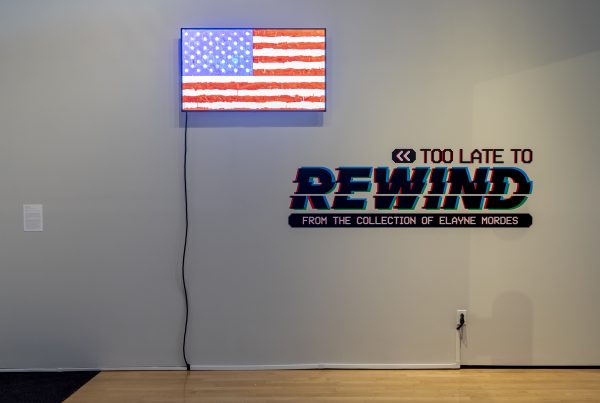
First mini golf and now video games? I’m starting to wonder if the Boca Raton Museum of Art is less a hallowed institution of fine art than an entertainment complex of Huizengic proportions – a Boomer’s for the cultural set.
But unlike “Big Art/Mini Golf,” which attempted to merge art with entertainment and succeeded at neither, “The Art of Video Games,” which opened this week, is a studious, three-pronged exhibition that is as intellectually edifying as it is fun. Kids will be attracted to the game room, which includes five games spanning the medium’s history and is playable in short spurts. Adults, meanwhile, will be flooded with nostalgia as they recall game consoles from their past, and serious video game enthusiasts will appreciate the exhibition’s topical breadth and insider knowledge.
The core of the exhibit is the procession of some 20 gaming hubs. Each features a game console presented under glass and accompanied by narrated videos about four of its signature games, each one activated by a different push-button.
Elegantly lit and arranged like a gaming trade show, the history begins with the graphically crude Atari Video Computer System and continues with light-speed advancement toward the tactile virtual realities of the Wii and Playstation 3. Along the way, the skeletons of many a dead console are exhumed. Few remember the brands IntelliVision and ColecoVision, but everybody knows the latter console’s signature game, “Donkey Kong,” which introduced the world to a character who would later morph into Mario.
By the time I progressed toward the Nintendo Entertainment System and the Sega Genesis, I felt the expected nostalgic pangs. I haven’t played a video game in more than a dozen years, but these were the consoles on which I grew up, spending countless hours in my parents’ den squirreled away with a controller and a pizza. (Given the recent revival of retro game consoles in mega-malls, I’m not alone here).

But the feeling this exhibition exudes the most is inspiration. The informative snippets of information in each clip speak of visionary, prescient game designers who were able to transcend their limited technological resources and chart a new frontier. Compared to the development of movies and electronic music, for instance, the giant leaps taken by game designers in just 40 years’ time is an astonishing tribute to technical ingenuity.
Many of these designers have the opportunity to speak about their craft – and the past, present and future of video games – in the exhibit’s third section, which comprised of interviews on several flat-panel televisions. This is the only portion of “The Art of Video Games” that doesn’t work, at least in the Boca Museum’s arrangement of it. Because of the casino-like cacophony of bleeps and bloops that flood visitors’ ears at all times, the designers’ comments are drowned out almost completely, requiring museumgoers to press their ears up to the screens just to hear them.
As informative as “The Art of Video Games” show is, it still begs an age-old question: “But is it art?” In his introduction, Chris Melissinos, who curated this exhibition for the Smithsonian American Art Museum, calls video games “a new art medium that is beyond traditional definitions used in the art world.” There are occasional connections to fine art, such as one wall devoted to landscape shots from several games, and the acknowledgement that the designer of Sega’s “Marble Madness” drew inspiration from M.C. Escher for his labyrinths of impossible structures.
But hard-line skeptics who don’t believe such a fundamentally young medium as video games should earn a place in the artistic lexicon will remain unconvinced. More open-minded viewers should amble over to game room to play a sample of “Flower,” a PS3 game designed as an “interactive poem.” It features no text, dialogue, challenges or stresses. The player simulates the wind as it peacefully carries flower petals across bucolic landscapes, fertilizing arid land and kick-starting nonfunctional windmills. In essence, you bring a new vibrancy to life by playing it, and hopefully walk away from the game with a newfound perspective on the natural world around you. This kind of ambition sounds a lot like art.
“The Art of Video Games” is at the Boca Raton Museum of Art, 501 Plaza Real, Boca Raton, through Jan. 13. For information, call 561/392-2500 or visit bocamuseum.org.







